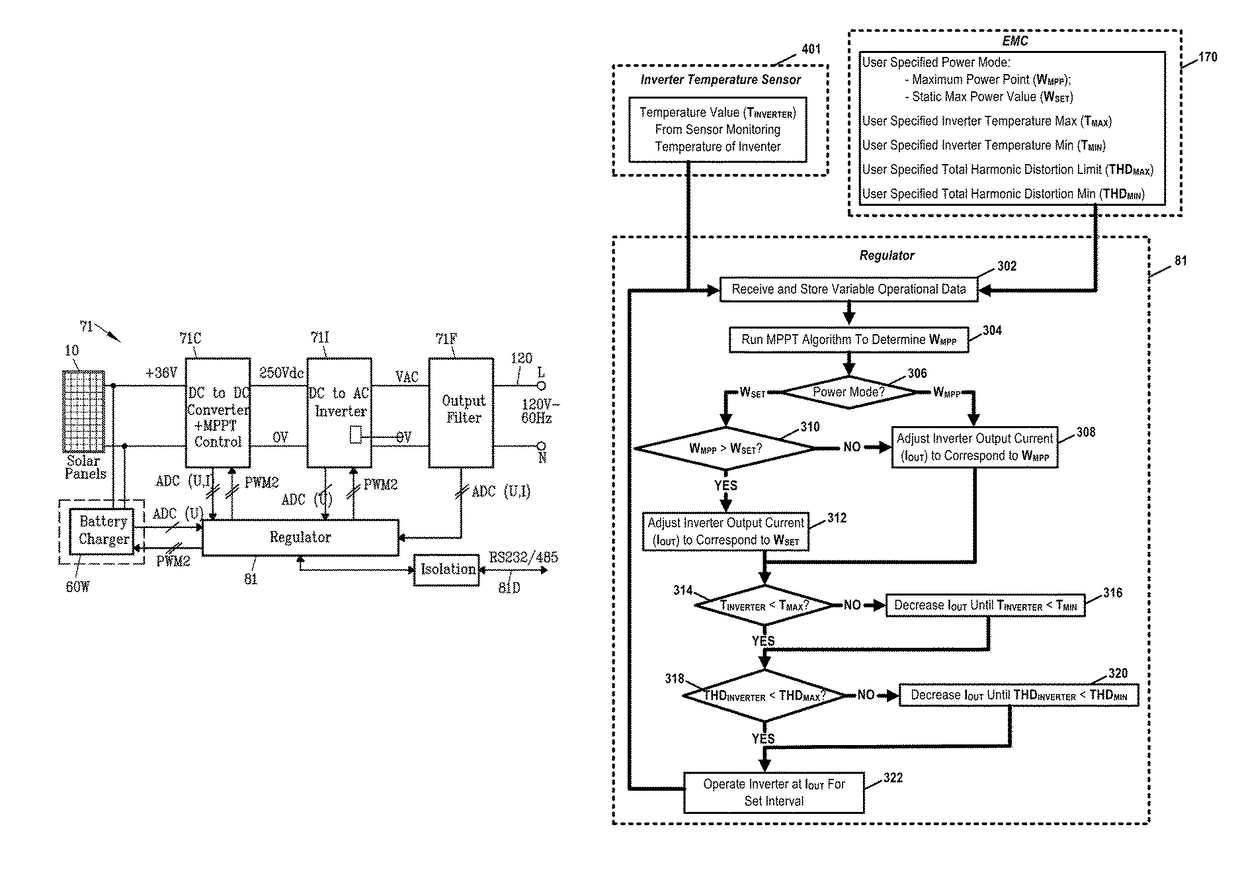Interface for renewable energy system
a renewable energy system and interface technology, applied in the field of solar energy, can solve the problems of damage to both the micro-inverter and the solar panel itself, and none of the prior art has completely satisfied the requirements for a complete solution
- Summary
- Abstract
- Description
- Claims
- Application Information
AI Technical Summary
Benefits of technology
Problems solved by technology
Method used
Image
Examples
Embodiment Construction
[0081]FIG. 1 is a front view of a building structure 5 incorporating an interface for renewable energy system 7 for interconnecting a plurality of power sources to an AC power grid 9. The plurality of power sources include a photovoltaic solar array 10 and a wind turbine 20. Preferably, the photovoltaic solar array 10 and the wind turbine 20 incorporate an energy storage unit such as a battery array 22 and / or a fuel cell array 24. Preferably a fuel operated generator 26 is incorporated into the system for emergency operation.
[0082]The photovoltaic solar array 10 is illustrated having a plurality of photovoltaic solar panels 11-18. Although the building structure 5 has been shown as a residential building structure, it should be understood that the photovoltaic solar array 10 may be mounted on virtually any type of building structure as well as being mounted on a ground surface.
[0083]Each of the plurality of photovoltaic solar panels 11-18 is made from a multiplicity of photovoltaic ...
PUM
| Property | Measurement | Unit |
|---|---|---|
| power | aaaaa | aaaaa |
| AC power | aaaaa | aaaaa |
| electrical power | aaaaa | aaaaa |
Abstract
Description
Claims
Application Information
 Login to View More
Login to View More - R&D
- Intellectual Property
- Life Sciences
- Materials
- Tech Scout
- Unparalleled Data Quality
- Higher Quality Content
- 60% Fewer Hallucinations
Browse by: Latest US Patents, China's latest patents, Technical Efficacy Thesaurus, Application Domain, Technology Topic, Popular Technical Reports.
© 2025 PatSnap. All rights reserved.Legal|Privacy policy|Modern Slavery Act Transparency Statement|Sitemap|About US| Contact US: help@patsnap.com



